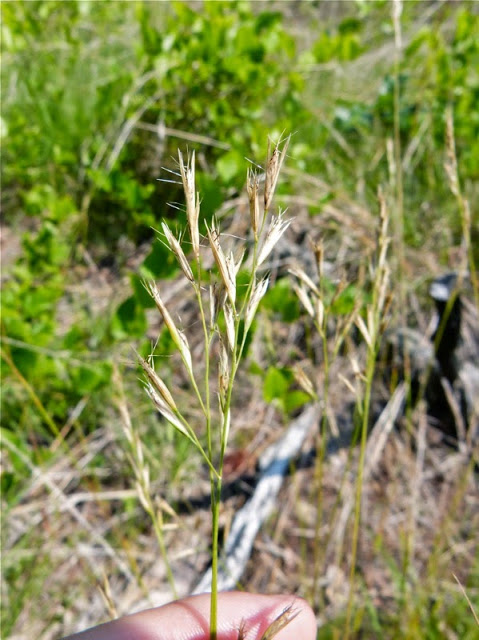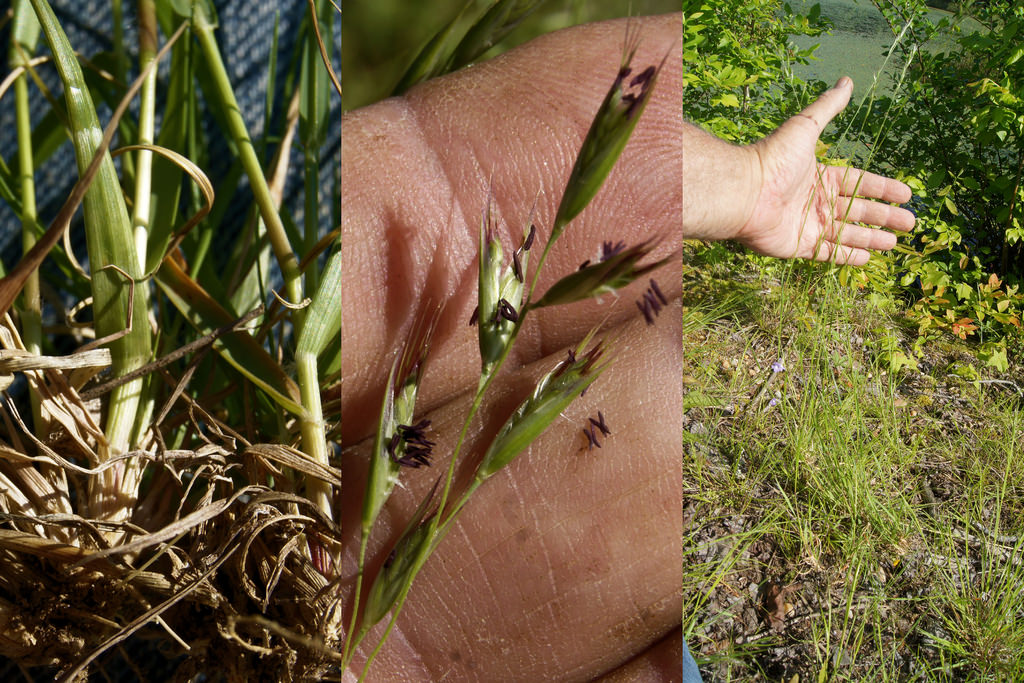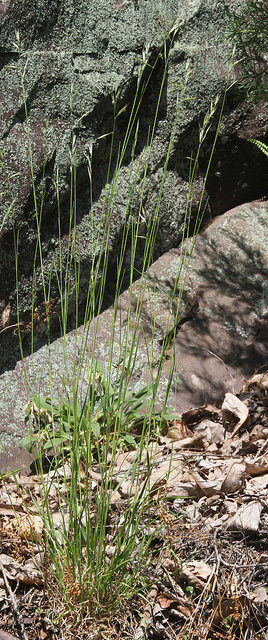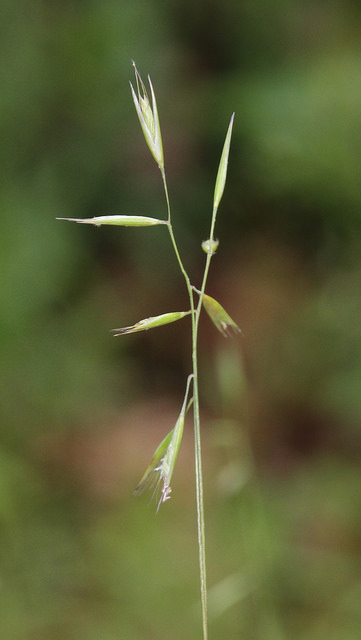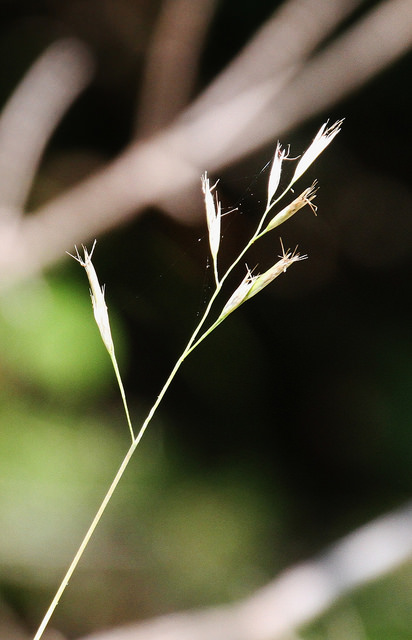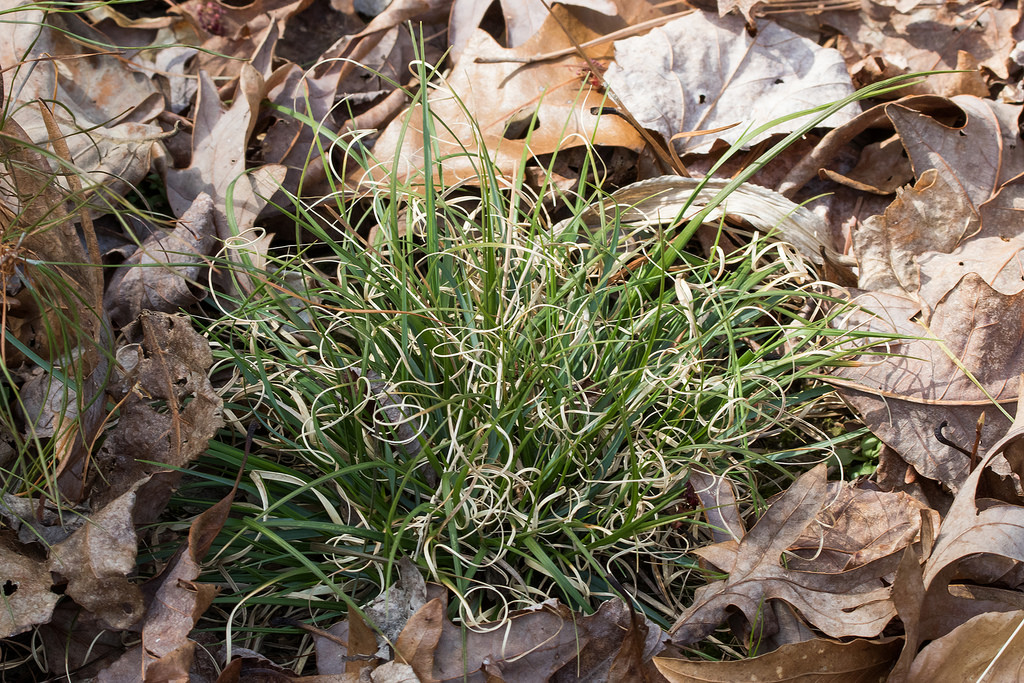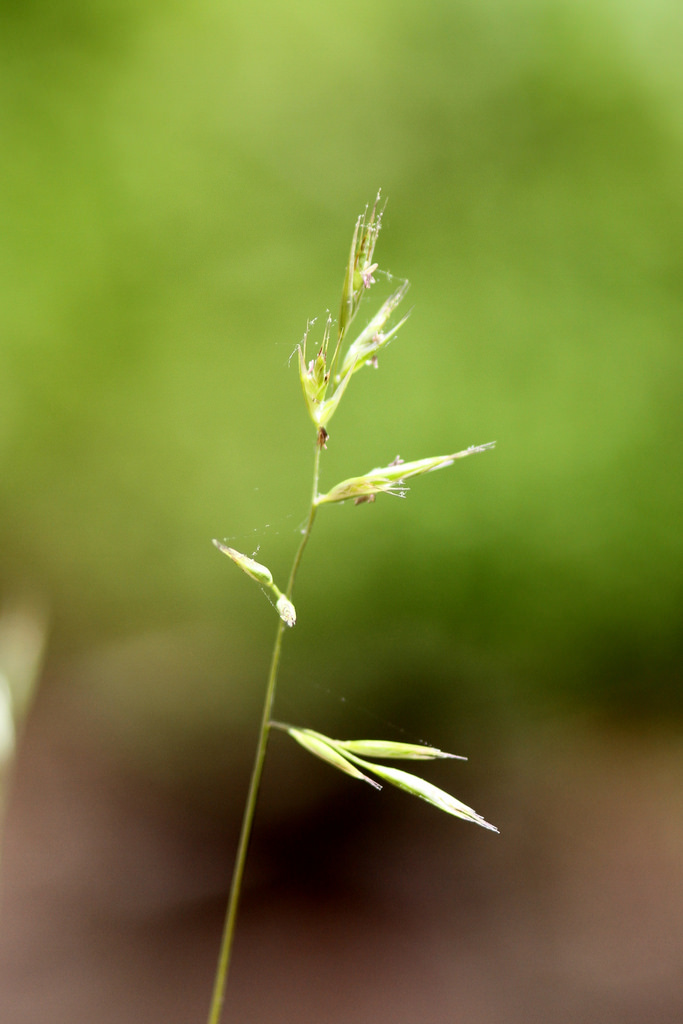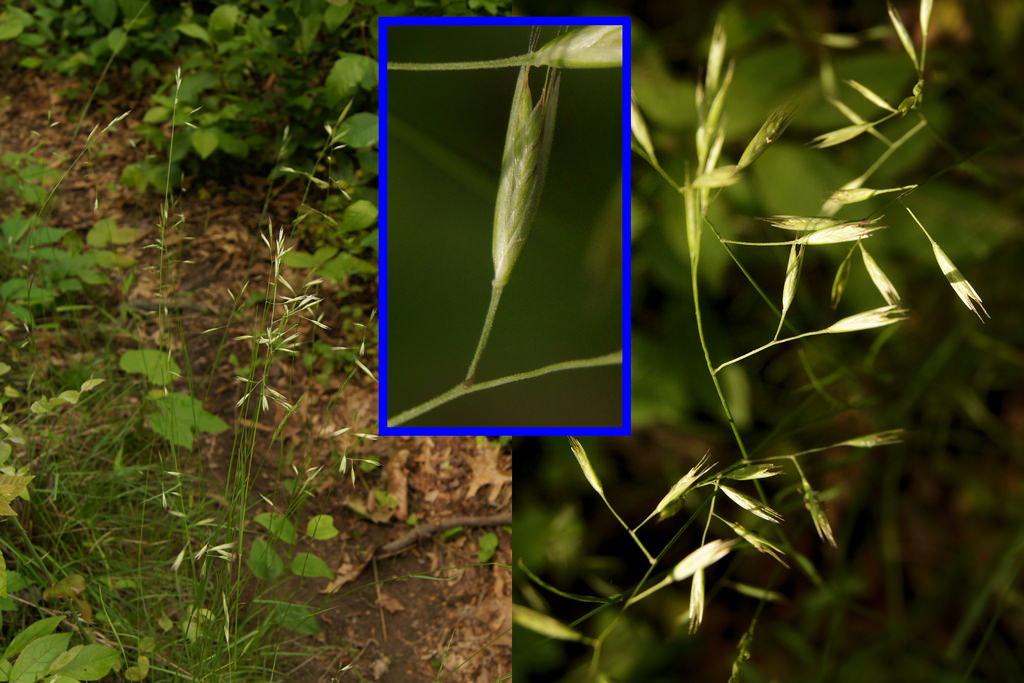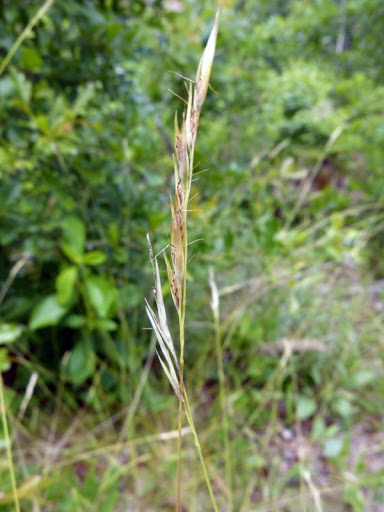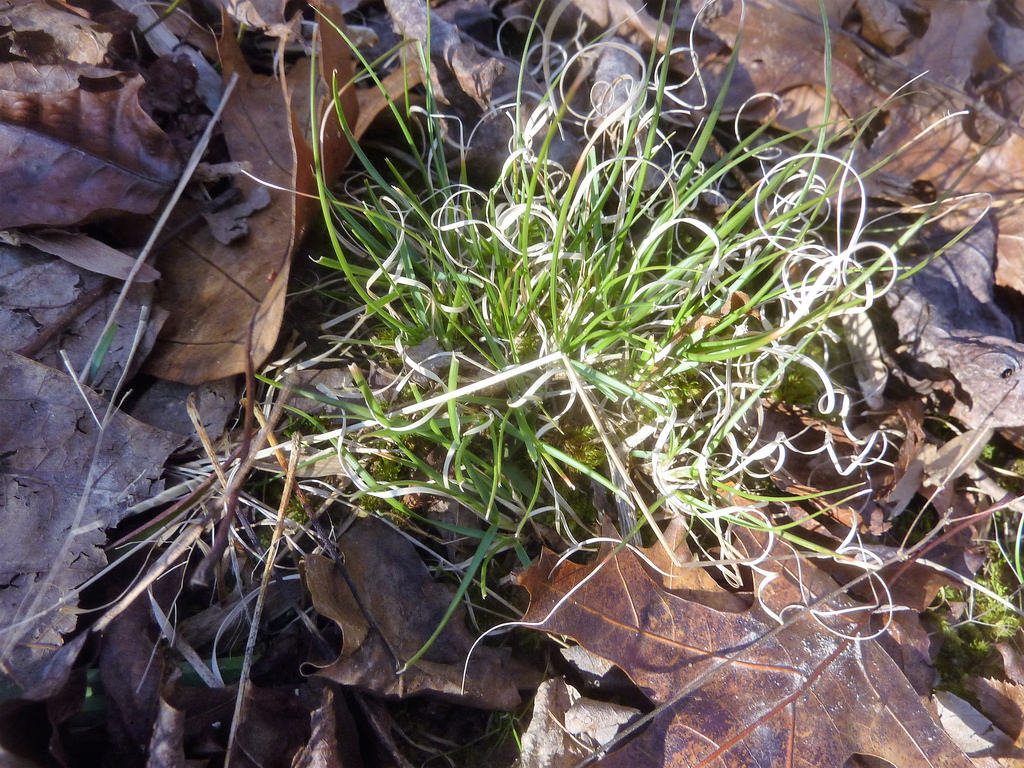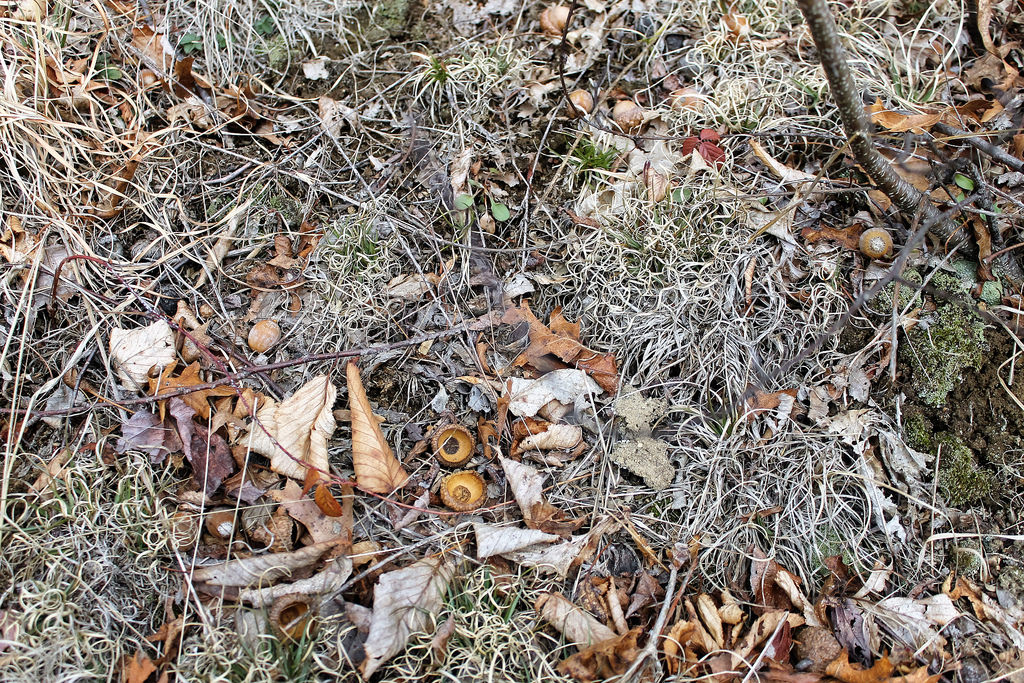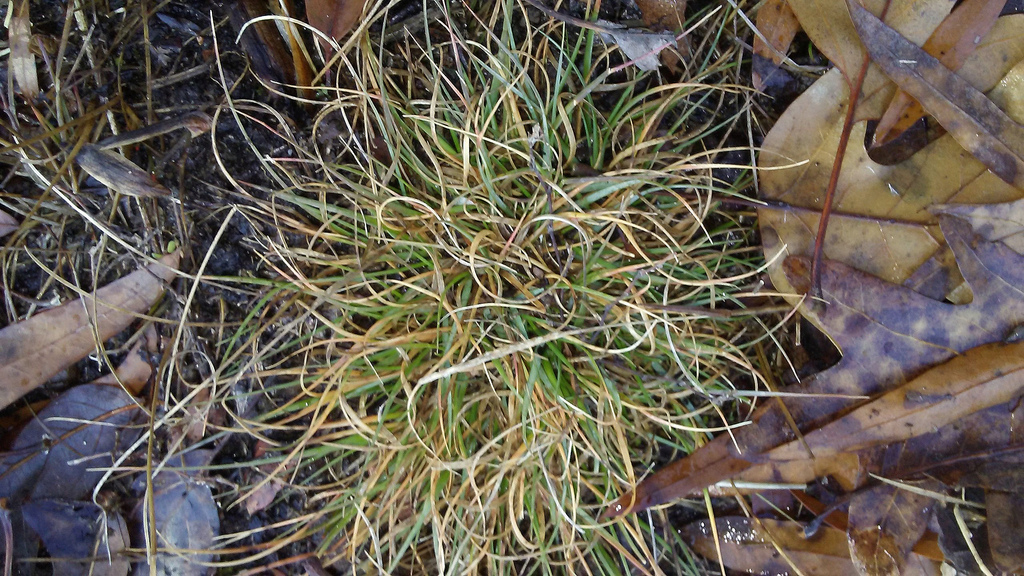Map Snapshot

























158 Records
Status
Common and widespread (Terrell & Peterson, 2009), growing across most of North America, including Maryland and Virginia. It is a dominant and widespread native species of oak-overstory savannah and glades. It forms a continuous turf with a lot of room for other plants (R. Simmons, pers. comm). This tough, perennial, native grass has the potential to replace non-native turfgrasses because it stays low; thrives in poor, rocky, thin, shallow, or compacted soil that receives little maintenance; is highly drought tolerant; and can grow in shade right up to a tree trunk. It grows in upland forests, woodlands, barrens, outcrops, roadsides, and other varied habitats (Weakley, et al., 2012). Traditional lawn care practices, such as irrigation, fertilization, leaf removal, and use of pesticides, will kill it. Poverty Oatgrass has a mycorrhizal relationship that provides it with water and nutrients. There may be only a single mycorrhiza that can fill this role, and this relationship may take a while to develop on a site that is left undisturbed, although the seeds may persist, dormant, in the soil for many years.
Description
The brown, drab leaves of Poverty Oatgrass form a dense tuft at the base of the plant and tend to be distinctive because they are curled or twisted. They persist through the cold season, so be sure to look for this easy-to-identify, curly-leaved plant on rocky, poor sites all winter. The plant blooms May-July, on flowering stalks that are much taller than the basal tuft of leaves.
Relationships
Host plant for Indian Skipper and Leonard's Skipper. A potential host plant for Common Wood-Nymph.
Seasonality Snapshot
Source: Wikipedia
| Danthonia spicata | |
|---|---|

| |
| Scientific classification | |
| Kingdom: | Plantae |
| Clade: | Tracheophytes |
| Clade: | Angiosperms |
| Clade: | Monocots |
| Clade: | Commelinids |
| Order: | Poales |
| Family: | Poaceae |
| Genus: | Danthonia |
| Species: | D. spicata
|
| Binomial name | |
| Danthonia spicata | |
| Synonyms[2] | |
|
Danthonia thermalis | |
Danthonia spicata is a species of grass known by the common name poverty oatgrass, or simply poverty grass. It is native to North America, where it is widespread and common in many areas.[1] The species is distributed across much of Canada and the United States, and its distribution extends into northern Mexico.[3][4]
This perennial bunchgrass is variable in appearance. It has no rhizomes or stolons. It grows anywhere from 7 to 100 cm (2.8 to 39 in) tall. The grass takes the form of a crowded tuft of leaves at ground level. The leaves often become curly and persist as they dry out. Plants in shady and moist areas may not have curly leaves. The inflorescence is a narrow panicle of up to 18 spikelets.[3] The spikelets have twisted, hairy awns. There are also some unopening, cleistogamous florets next to the leaves, and in the panicles.[5] There is a long-lasting soil seed bank, with the seeds persisting for decades before being stimulated to germinate.[4]
This grass grows in many types of habitat, and it occurs in a variety of forest and grassland ecosystems. It grows easily on poor, dry, rocky soils,[1][3][6] for which it owes its common name. When a habitat is disturbed, after a wildfire, for example, the seeds long-buried in the soil are stimulated and germinate, making the plant a pioneer species that colonizes recently cleared land. It then becomes less common as other plant species begin to move in. It is a common member of the plant community in some ecosystems that are maintained by a regime of frequent fires, such as jack pine (Pinus banksiana) barrens.[6]
References
[edit]- ^ a b c Danthonia spicata. Archived 2018-07-23 at the Wayback Machine The Nature Conservancy. Retrieved 2011-12-18.
- ^ Avena spicata ITIS report
- ^ a b c Danthonia spicata. Archived 2012-06-13 at the Wayback Machine Grass Manual Treatment. Retrieved 2011-12-18.
- ^ a b Covington, Daniel (2000). "Danthonia spicata". Fire Effects Information System (FEIS). US Department of Agriculture (USDA), Forest Service (USFS), Rocky Mountain Research Station, Fire Sciences Laboratory. Retrieved 2011-12-18.
- ^ Philipson, M. N. (1986). "A reassessment of the form of reproduction in Danthonia spicata L. Beauv". New Phytologist. 103: 231–43. doi:10.1111/j.1469-8137.1986.tb00611.x.
For accessing the JW Van Sambeek study, use this link: https://www.nrs.fs.usda.gov/pubs/jrnl/2010/nrs_2010_navarrete-tindall_001.pdf
External links
[edit]- Danthonia spicata in the CalPhotos photo database, University of California, Berkeley
